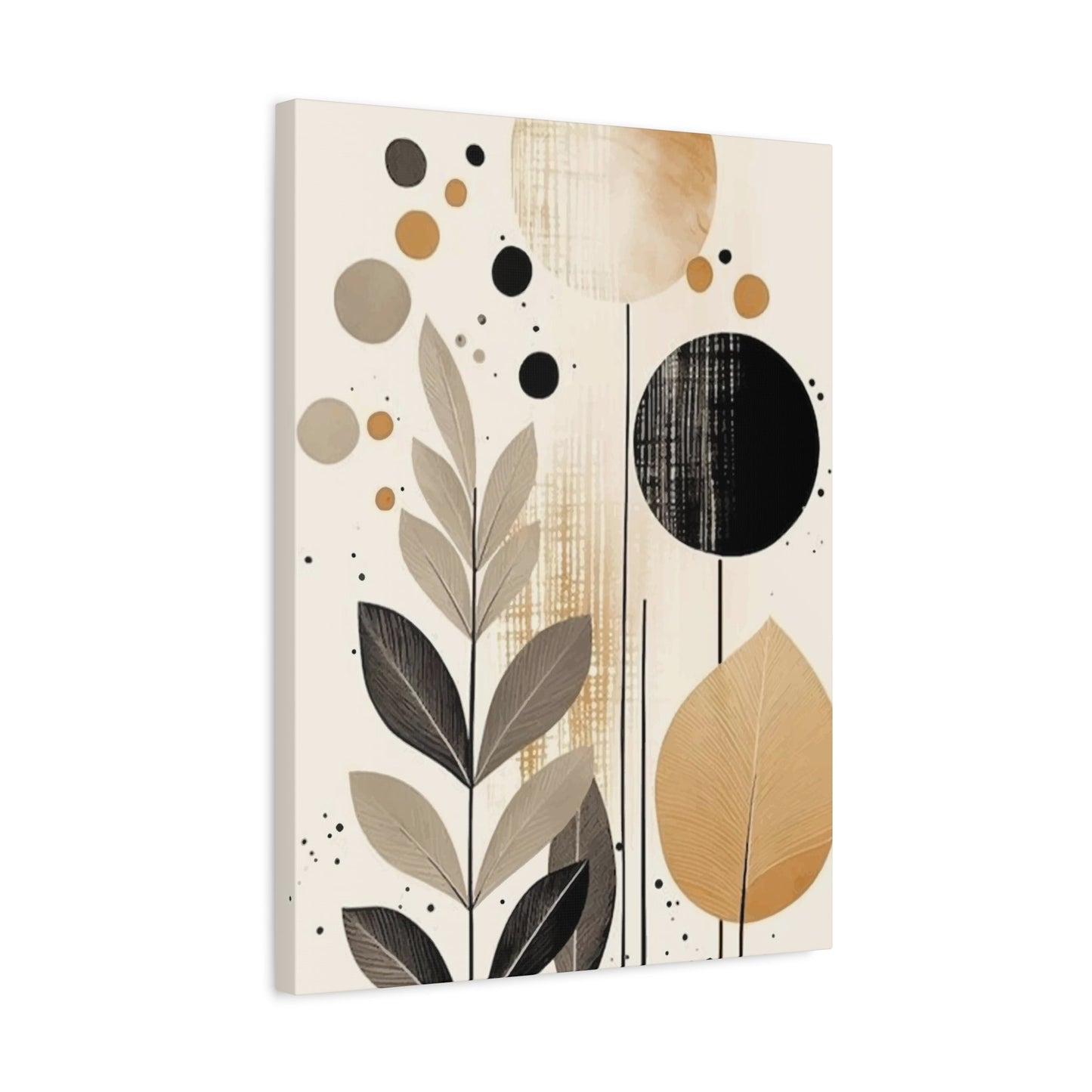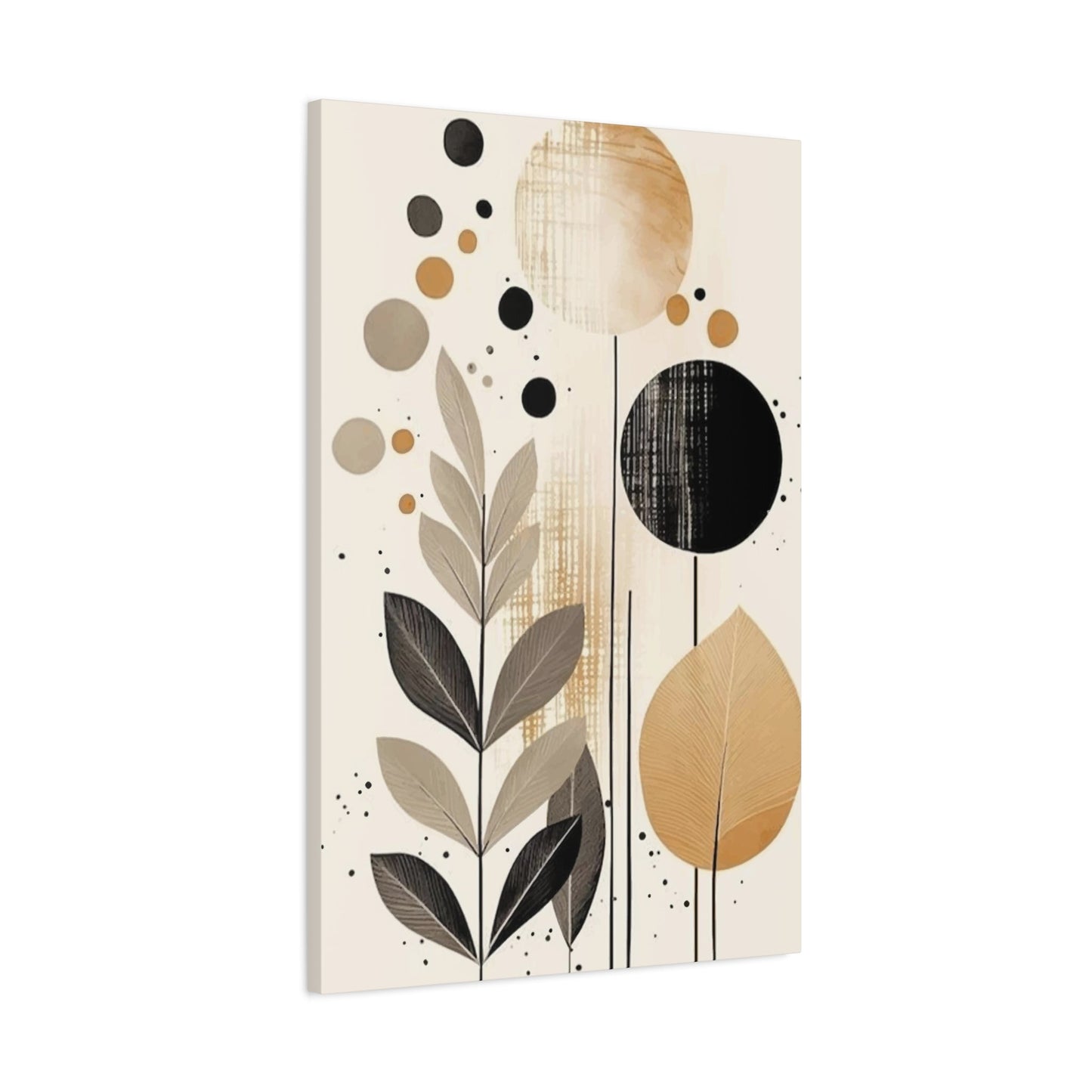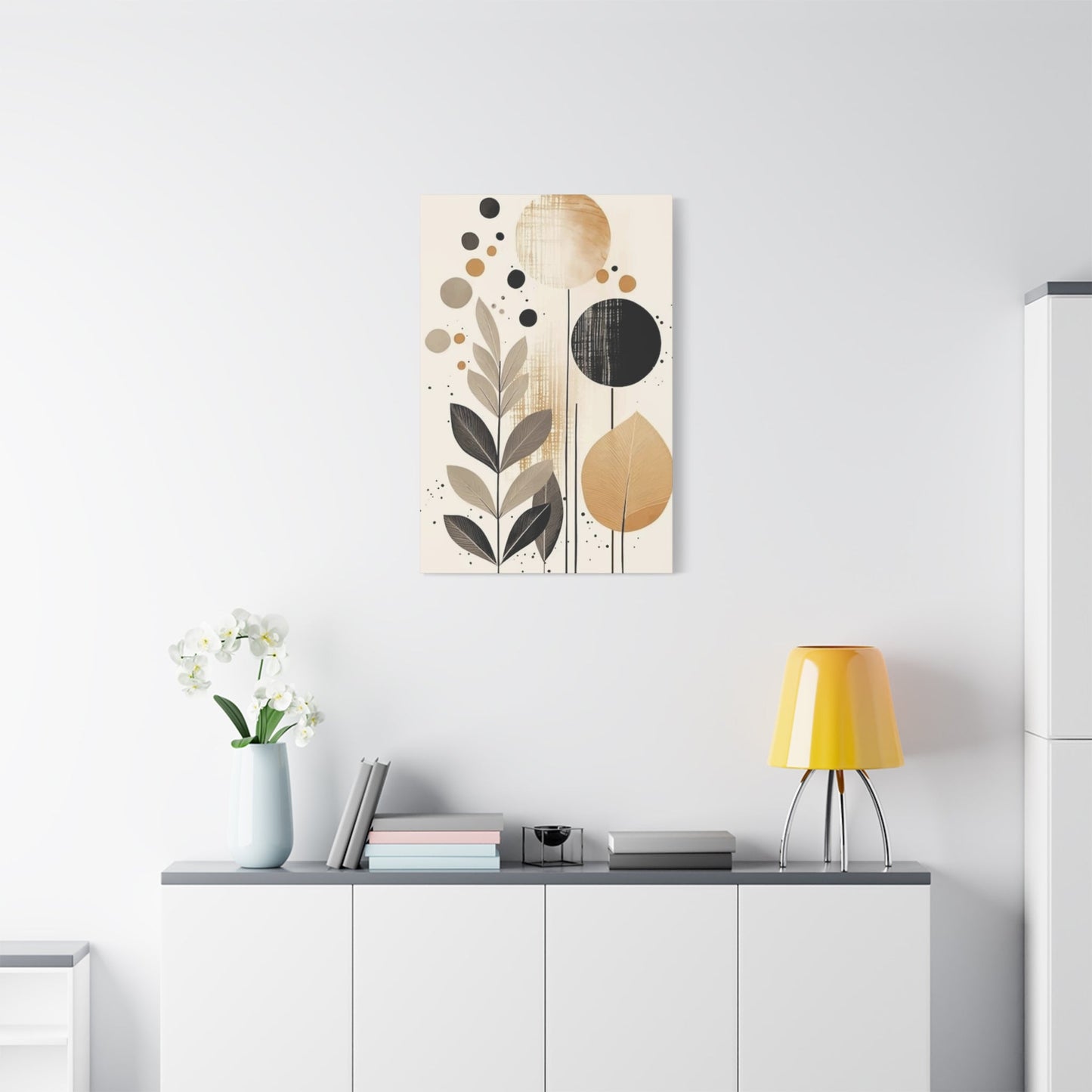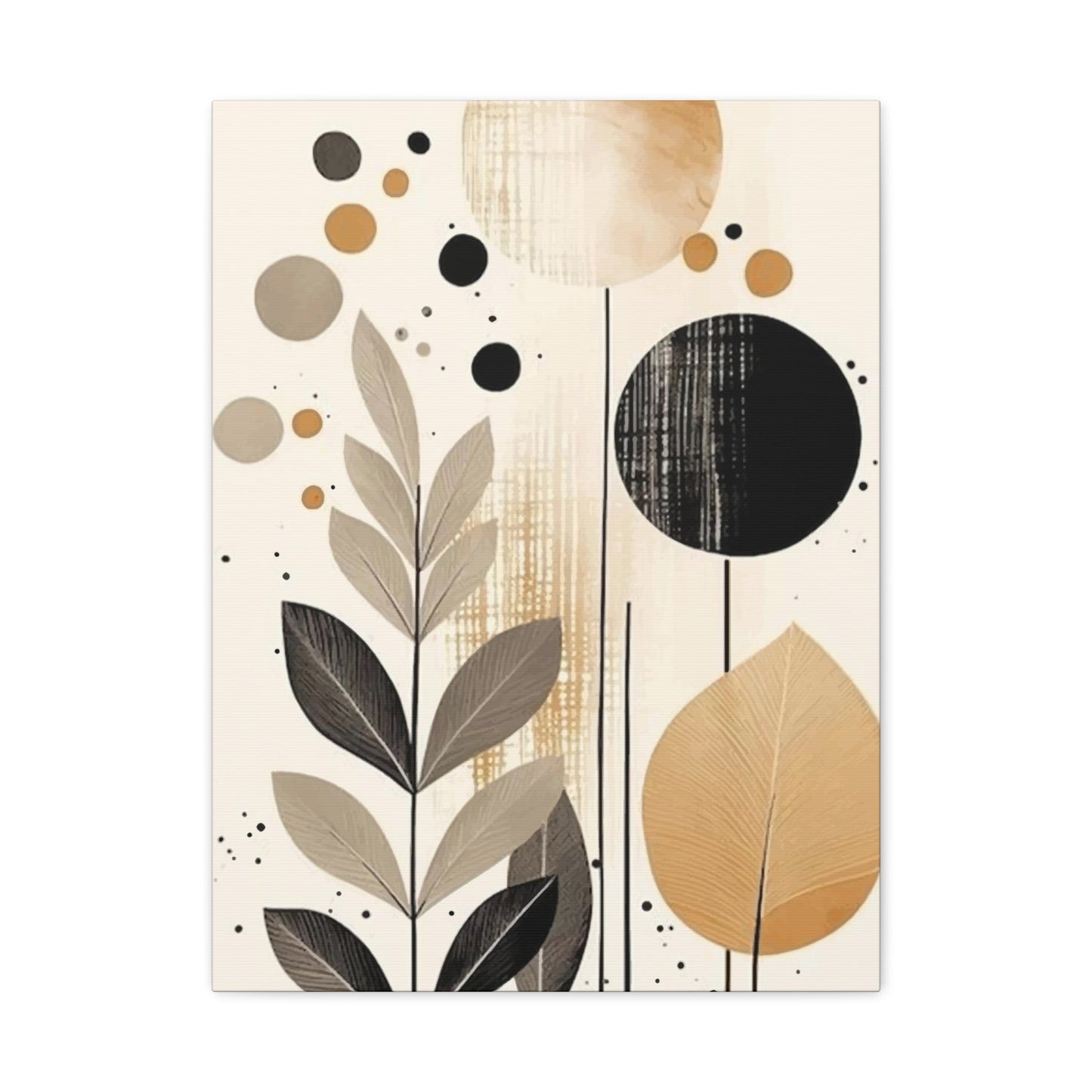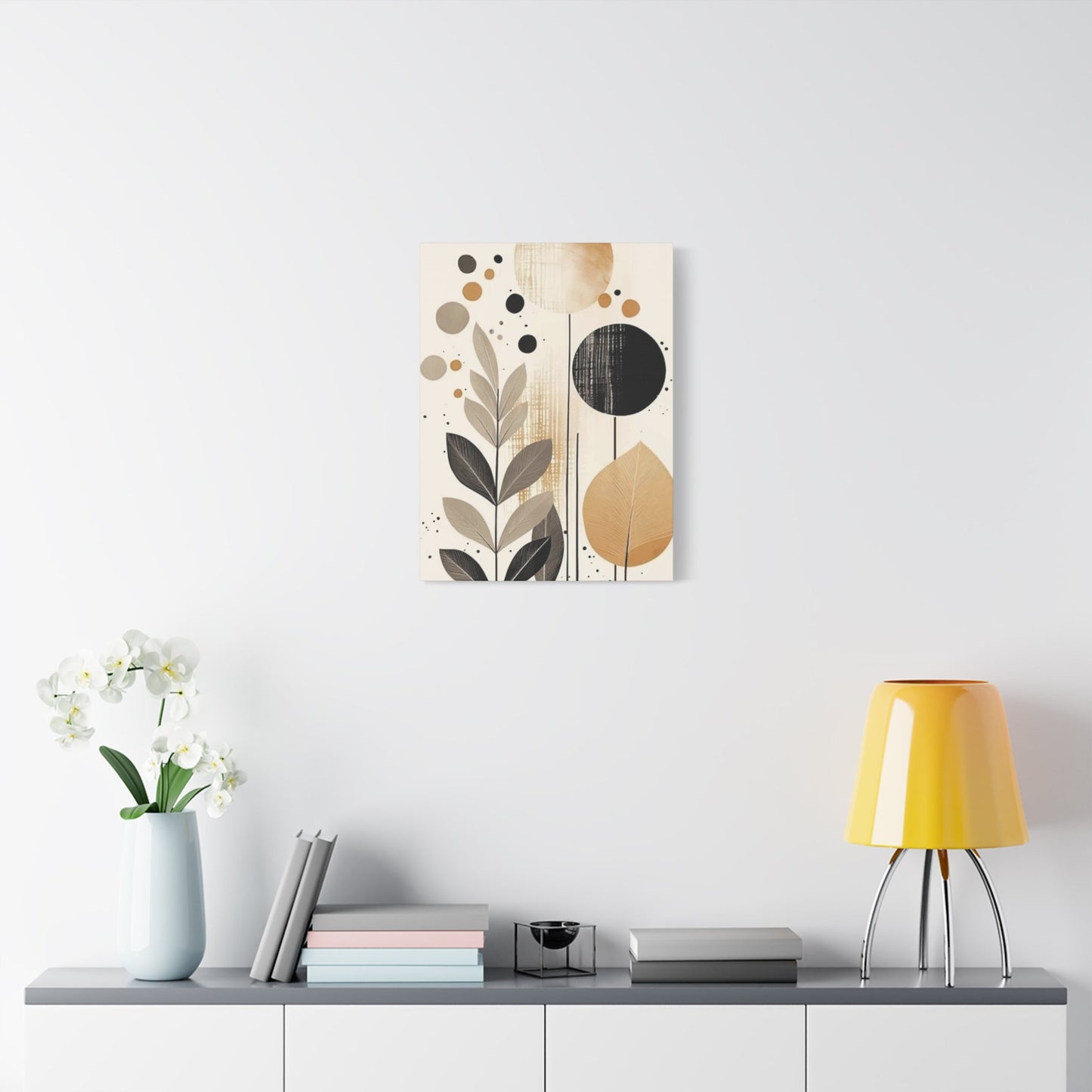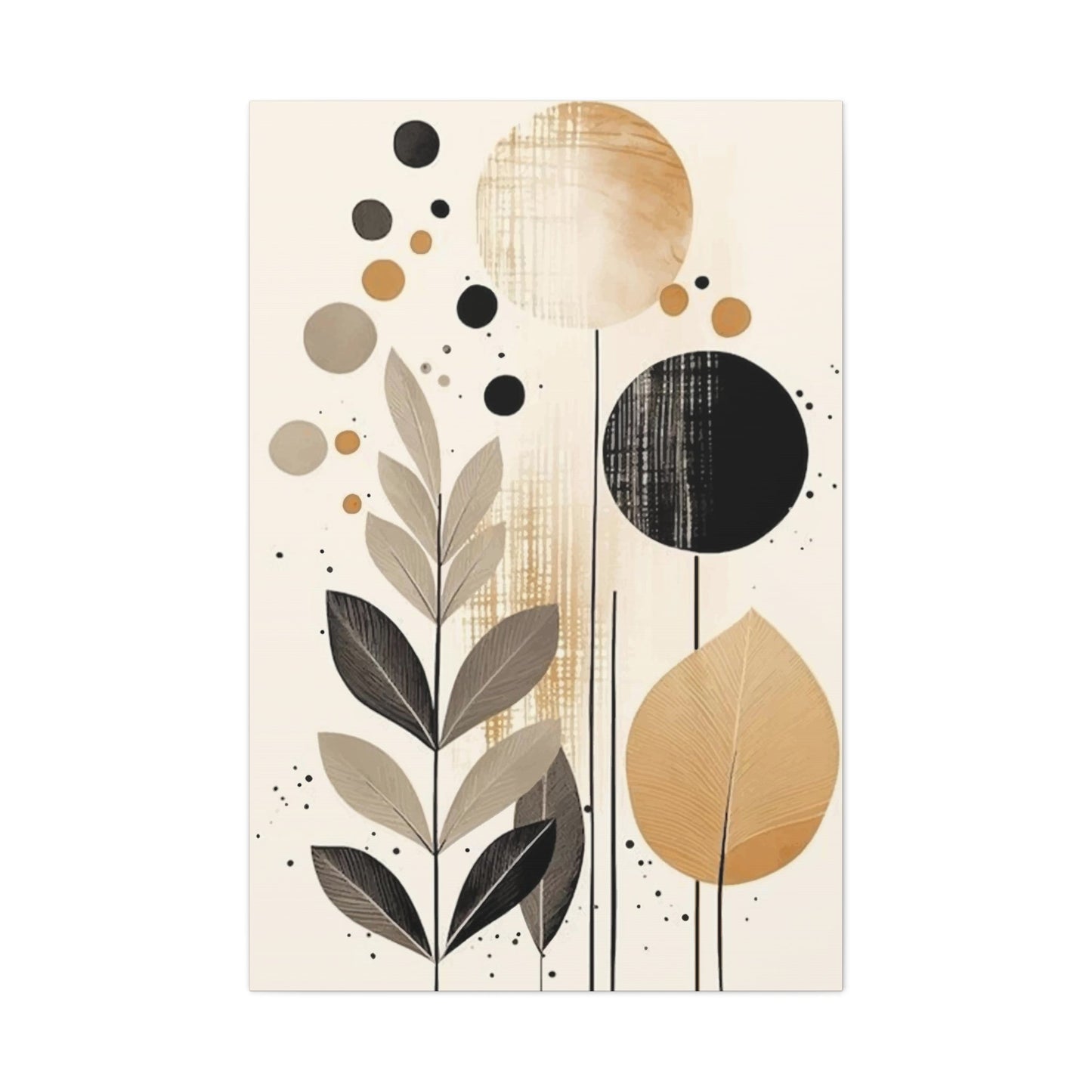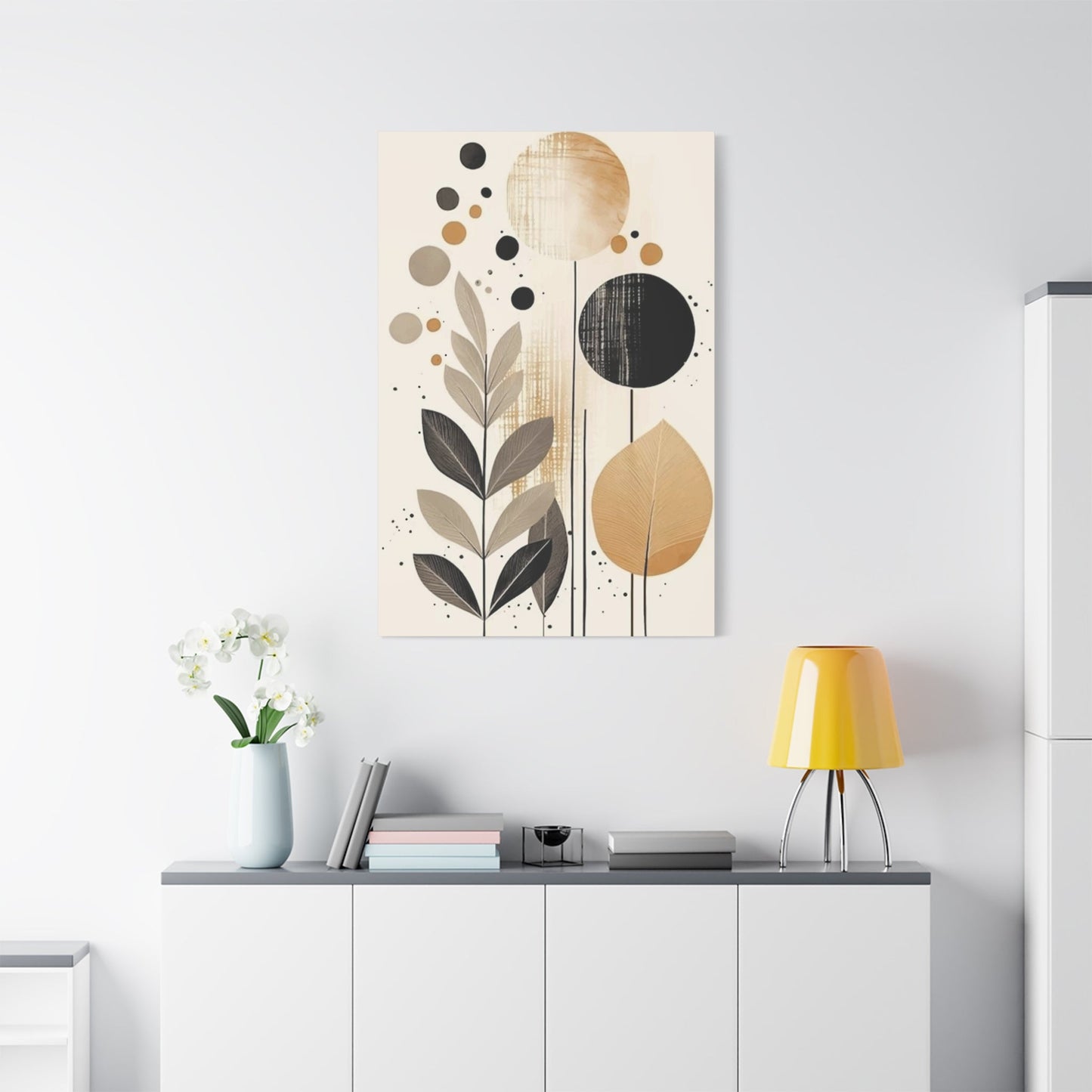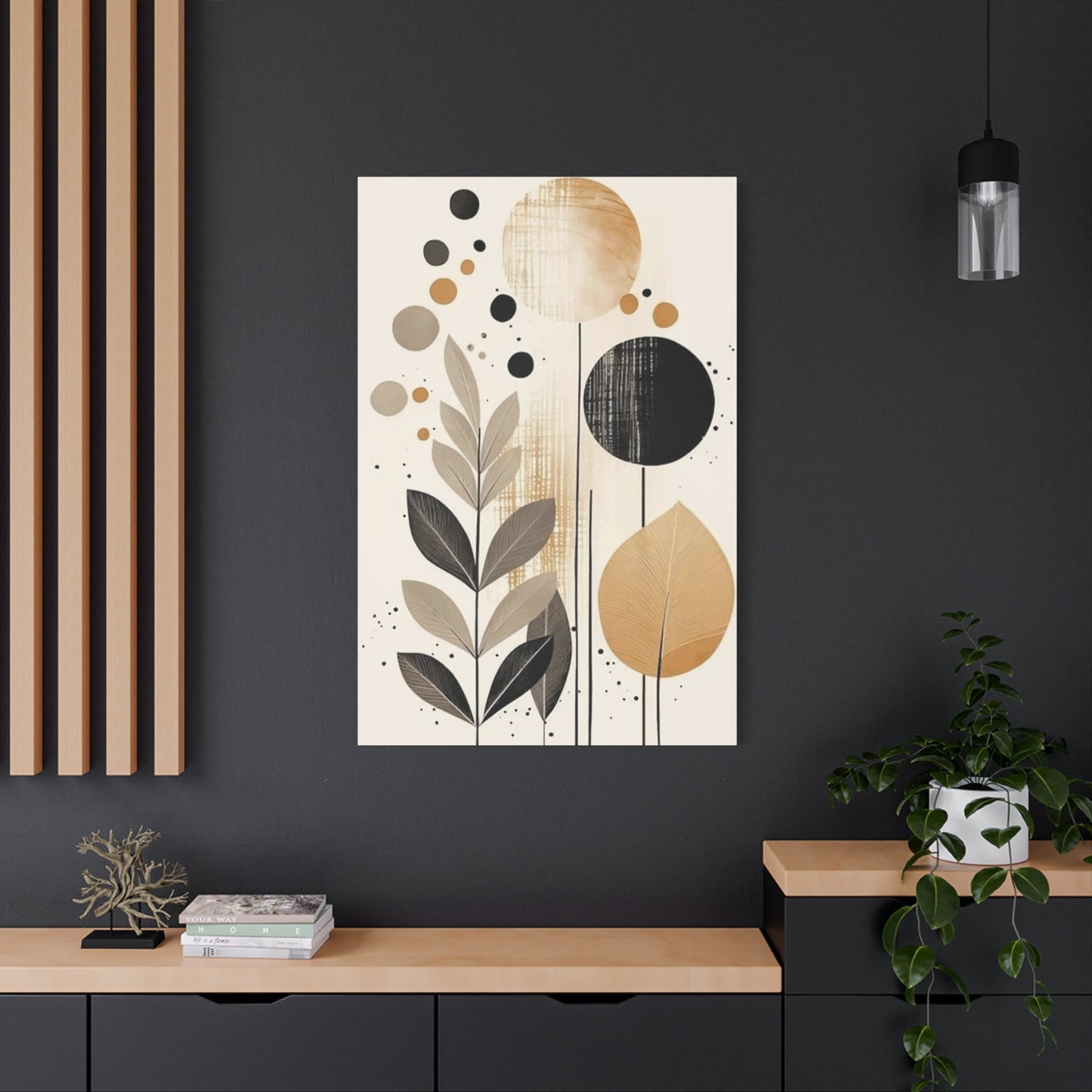Bohemian Art Wall: Creating Enchanting Spaces with Eclectic Artistic Expression
The world of interior design has witnessed countless trends come and go, but few styles have captured hearts and imaginations quite like the bohemian aesthetic. At the center of this captivating design philosophy lies the bohemian art wall - a magnificent canvas that tells stories, evokes emotions, and transforms ordinary spaces into extraordinary sanctuaries of creativity and self-expression.
Bohemian art walls represent far more than simple decoration; they embody a lifestyle, a philosophy, and a deeply personal approach to creating spaces that nurture the soul. These artistic compositions blend colors, textures, patterns, and meaningful objects in ways that celebrate individuality while honoring the rich traditions of nomadic cultures, artistic movements, and free-spirited living.
The bohemian art wall serves as the focal point of any room, drawing the eye and captivating the imagination with its eclectic mix of visual elements. From vintage textiles and macrame hangings to painted canvases and collected treasures from distant travels, these walls become repositories of personal history and artistic expression. They speak to our desire for authenticity in an increasingly homogenized world, offering a refuge where creativity reigns supreme and conventional rules need not apply.
Creating a bohemian art wall requires more than simply hanging random pieces on a wall. It demands an understanding of balance, harmony, and the subtle art of controlled chaos that defines the bohemian aesthetic. The process involves carefully curating pieces that speak to your soul while ensuring they work together to create a cohesive yet wonderfully eclectic display that captures the essence of bohemian living.
History and Origins of Bohemian Artistic Expression
The bohemian movement finds its roots in 19th century France, where artists, writers, and intellectuals rejected mainstream society's conventions in favor of creative freedom and unconventional living. These original bohemians gathered in the Bohemia quarter of Paris, creating communities that prioritized artistic expression over material wealth and social conformity. Their approach to decoration and living spaces reflected this philosophy, embracing collected objects, handmade items, and artistic pieces that told stories of their adventures and creative journeys.
The bohemian aesthetic drew inspiration from various cultures and artistic traditions, particularly those of nomadic peoples who carried their possessions and artistic expressions with them as they traveled. Romani communities, with their vibrant textiles, intricate metalwork, and storytelling traditions, heavily influenced the bohemian approach to decoration and artistic display. Similarly, the artistic traditions of North Africa, the Middle East, and South Asia contributed elements that would become hallmarks of bohemian style.
During the 1960s and 1970s, the bohemian aesthetic experienced a significant revival as counterculture movements embraced its anti-establishment philosophy and emphasis on personal expression. This period saw the incorporation of Eastern philosophical and artistic elements, including mandala designs, spiritual symbols, and meditation-inspired art forms. The hippie movement's embrace of handcrafted items, natural materials, and eclectic artistic expression further solidified the bohemian art wall as a symbol of alternative living and creative freedom.
The Victorian era's fascination with exotic cultures and global trade routes also contributed to the development of bohemian artistic expression. Wealthy travelers and collectors brought back textiles, artifacts, and artistic pieces from their journeys, displaying them in arrangements that celebrated cultural diversity and artistic craftsmanship. This tradition of collecting and displaying meaningful objects from various cultures became a cornerstone of bohemian decorating philosophy.
Modern bohemian art walls continue to honor these historical traditions while incorporating contemporary artistic expressions and global influences. Today's bohemian spaces reflect our increasingly connected world, where artists and travelers can access and appreciate artistic traditions from every corner of the globe. Social media and digital platforms have made it easier than ever to discover and acquire unique pieces that contribute to the rich tapestry of a bohemian art wall.
The evolution of bohemian artistic expression has also been shaped by various artistic movements, including impressionism, surrealism, and abstract expressionism. These movements' emphasis on personal interpretation, emotional expression, and rejection of academic conventions aligned perfectly with bohemian philosophy. Contemporary bohemian art walls often incorporate pieces inspired by these movements, creating displays that bridge historical and modern artistic traditions.
Essential Elements of Bohemian Art Wall Design
Creating an authentic bohemian art wall requires understanding the fundamental elements that define this distinctive aesthetic. The bohemian approach to wall decoration embraces certain key principles that distinguish it from other decorating styles and create the characteristic sense of collected, eclectic beauty that defines bohemian spaces.
Layering forms the foundation of bohemian art wall design, creating depth and visual interest through the strategic placement of different elements at varying distances from the wall surface. This technique involves hanging textiles behind framed pieces, placing sculptural elements in front of paintings, and creating shadow play through the strategic use of lighting. The layering approach allows for the display of more pieces within a given space while creating a sense of abundance and richness that characterizes bohemian design.
Color plays a crucial role in bohemian art walls, with rich, saturated hues taking precedence over pale or muted tones. Jewel tones such as deep purples, emerald greens, sapphire blues, and ruby reds create the warm, enveloping atmosphere that makes bohemian spaces feel like magical retreats. These colors often appear in textiles, painted pieces, and decorative objects, creating a cohesive color story that ties the entire display together while allowing individual pieces to shine.
Texture adds another essential dimension to bohemian art walls, incorporating elements that invite touch and create visual interest through their surface qualities. Rough-hewn wood, smooth metals, soft fabrics, and intricately woven materials all contribute to the tactile richness that defines bohemian spaces. The interplay of different textures creates visual depth and prevents the wall from appearing flat or one-dimensional.
Pattern mixing represents one of the most distinctive aspects of bohemian art wall design, combining various prints, motifs, and decorative elements in ways that would be considered unconventional in other design styles. Paisley patterns might appear alongside geometric designs, floral motifs, and tribal prints, creating a rich tapestry of visual interest that reflects the global influences that shape bohemian aesthetics.
Natural materials feature prominently in bohemian art walls, reflecting the movement's connection to earth-based spirituality and sustainable living practices. Wood, stone, metals, fibers, and other natural materials bring warmth and authenticity to the display while connecting the indoor space to the natural world. These materials often show signs of age, wear, or weathering that add character and tell stories of their origins and journeys.
Handcrafted elements distinguish bohemian art walls from more commercial or mass-produced decorating approaches. Handwoven textiles, hand-painted canvases, carved sculptures, and other artisanal pieces celebrate human creativity and skill while ensuring that each bohemian art wall remains unique. The slight imperfections and individual characteristics of handmade items add to their charm and authenticity.
Textiles and Fabric Arts in Bohemian Wall Displays
Textiles form the backbone of most bohemian art walls, providing color, pattern, texture, and cultural significance to these eclectic displays. The bohemian approach to textile art embraces pieces from various global traditions, creating walls that serve as celebrations of human creativity and cultural diversity. Understanding how to select, display, and care for textiles within a bohemian art wall context opens up endless possibilities for creating truly spectacular displays.
Vintage and antique textiles bring particular authenticity and character to bohemian art walls. Persian rugs, kilims, suzanis, and other traditional weavings carry the patina of age and the stories of their makers and previous owners. These pieces often feature complex patterns, rich colors, and intricate craftsmanship that makes them worthy of wall display rather than floor use. When hanging vintage textiles, consider their fragility and use appropriate hanging methods that distribute weight evenly and avoid damage to the fibers.
Contemporary textile artists continue the traditions of their predecessors while incorporating modern techniques, materials, and design sensibilities. Handwoven wall hangings, fiber sculptures, and mixed-media textile pieces bring fresh energy to bohemian art walls while honoring the handcraft traditions that define the aesthetic. Seeking out work by contemporary textile artists also supports living artists and ensures that your bohemian art wall includes pieces that reflect current creative expressions.
Macrame represents one of the most recognizable textile arts associated with bohemian design, with its intricate knotwork creating sculptural pieces that add texture and dimension to wall displays. Large macrame wall hangings can serve as anchor pieces around which other elements are arranged, while smaller macrame pieces can fill gaps and add textural interest throughout the display. The neutral colors typically associated with macrame cord provide visual rest areas within more colorful bohemian art walls.
Tapestries and wall hangings from various cultural traditions bring global perspective and artistic heritage to bohemian art walls. Indian block prints, African mudcloths, South American weavings, and European tapestries each contribute unique aesthetic elements while telling stories of their cultural origins. Mixing pieces from different traditions creates the worldly, well-traveled feeling that characterizes authentic bohemian spaces.
Embroidered textiles add fine detail and intricate beauty to bohemian art walls through their delicate stitchwork and often symbolic imagery. Vintage embroidered pieces, ethnic costumes, ceremonial textiles, and contemporary embroidery art all bring their own special qualities to textile-focused displays. The time and skill required to create embroidered pieces make them particularly meaningful additions to bohemian art walls that celebrate handcraft and artistic dedication.
Fabric collages and mixed-media textile pieces allow for the incorporation of meaningful fabric scraps, vintage clothing, and textile fragments into artistic compositions. These pieces might combine elements from family heirloom fabrics, travel souvenirs, or personally significant clothing items, creating deeply personal artworks that tell individual stories within the larger narrative of the bohemian art wall.
The display of textiles within bohemian art walls requires consideration of both aesthetic and preservation concerns. Proper hanging techniques protect valuable pieces while ensuring they appear at their best within the overall composition. Using museum-quality hanging systems, avoiding direct sunlight, and regularly inspecting pieces for signs of deterioration help preserve textile collections for future enjoyment.
Macrame and Fiber Arts Integration
Macrame has experienced a remarkable renaissance in recent years, becoming one of the most popular elements in contemporary bohemian art walls. This ancient art form, which involves creating decorative and functional objects through knotting techniques, brings texture, movement, and artisanal beauty to wall displays while connecting modern bohemian spaces to historical craft traditions.
The history of macrame spans centuries and cultures, with evidence of knotting techniques appearing in ancient Assyrian, Egyptian, and Chinese civilizations. Arabic weavers refined many of the techniques that would later spread throughout Europe and the Americas through trade routes and cultural exchange. The word macrame itself derives from the Arabic word migramah, meaning fringe, highlighting the technique's Middle Eastern origins and its connection to textile arts.
Contemporary macrame artists have expanded far beyond the simple plant hangers and wall decorations that characterized the craft's 1970s popularity. Today's fiber artists create complex sculptural pieces, intricate geometric patterns, and innovative mixed-media works that incorporate various materials alongside traditional macrame cord. These modern interpretations bring fresh sophistication to bohemian art walls while honoring the craft's handmade heritage.
Large-scale macrame installations can serve as dramatic focal points within bohemian art walls, creating stunning backdrops that anchor entire displays. These substantial pieces might measure several feet in width and height, incorporating multiple colors, textures, and knotting techniques to create visually complex compositions. The three-dimensional quality of macrame adds depth to wall displays, creating shadow play and visual interest that changes throughout the day as lighting conditions shift.
Combining macrame with other fiber arts creates rich, textured compositions that celebrate the full spectrum of textile creativity. Woven elements, embroidered details, painted fabrics, and found objects can all be incorporated into macrame pieces, resulting in unique artworks that blur the boundaries between different craft traditions. This mixed-media approach aligns perfectly with bohemian philosophy, which celebrates creative freedom and unconventional artistic expression.
The color palette of macrame pieces can range from traditional natural fiber tones to vibrant dyed cords that add bold color statements to bohemian art walls. Natural cotton, jute, and hemp provide neutral backgrounds that allow other wall elements to shine, while colored cords can echo or complement the hues found in paintings, textiles, and decorative objects throughout the display.
Macrame's versatility extends to its ability to incorporate functional elements within artistic compositions. Hanging planters, small shelves, and display pouches can be woven into larger macrame pieces, creating wall installations that serve both aesthetic and practical purposes. This functional aspect appeals to bohemian sensibilities that value both beauty and utility in home decorations.
Creating macrame pieces for bohemian art walls can become a meditative practice that connects the maker to the slow craft movement and mindful living philosophy often associated with bohemian lifestyles. The repetitive nature of knotting techniques can provide stress relief and creative satisfaction while producing beautiful artworks that carry personal meaning and handmade authenticity.
The installation of macrame pieces requires consideration of weight distribution and hanging points, particularly for larger pieces that may be quite heavy when completed. Proper mounting techniques ensure that macrame installations remain secure while preventing damage to walls or the artwork itself. Professional installation may be advisable for substantial pieces or valuable artworks.
Vintage and Antique Art Incorporation
Vintage and antique artworks bring depth, character, and historical significance to bohemian art walls, creating displays that feel collected over time rather than purchased all at once. These pieces carry the patina of age and the stories of their previous owners, contributing to the authentic, worldly atmosphere that defines successful bohemian spaces.
The hunt for vintage and antique art pieces can become an adventure in itself, taking collectors to flea markets, estate sales, antique shops, and online marketplaces in search of unique treasures. This process of discovery and acquisition aligns with bohemian values that prize individual expression and meaningful objects over mass-produced decorations. Each piece found adds not only visual interest to the art wall but also personal memories of the search and acquisition process.
Oil paintings from various periods and artistic movements contribute classical beauty and technical sophistication to bohemian art walls. While major museum-quality pieces may be beyond most budgets, smaller works by lesser-known artists, amateur painters, and regional talents can be found at reasonable prices while still providing authentic vintage character. Dark, moody landscapes, portrait studies, and still life paintings add gravitas and artistic weight to eclectic bohemian displays.
Antique prints and illustrations offer another accessible way to incorporate historical artwork into bohemian art walls. Botanical prints, architectural drawings, fashion illustrations, and scientific diagrams from past eras bring educational interest alongside decorative beauty. These pieces often feature the detailed craftsmanship and attention to accuracy that characterized pre-digital printing methods, making them particularly appealing in our current digital age.
Vintage photography adds documentary interest and human connection to bohemian art walls through captured moments from previous eras. Old family portraits, travel photographs, and documentary images tell stories while contributing visual variety to textile and painting-heavy displays. The black and white or sepia tones of vintage photography provide neutral elements that help balance more colorful bohemian art wall compositions.
Folk art and outsider art pieces bring authentic cultural expression and individual creativity to bohemian displays. Hand-carved sculptures, painted signs, quilts, and other examples of folk creativity celebrate human ingenuity and artistic expression outside formal art world contexts. These pieces often feature bold colors, direct imagery, and emotional authenticity that resonates with bohemian values.
Religious and spiritual artifacts from various traditions contribute symbolic meaning and cultural depth to bohemian art walls. Vintage icons, prayer flags, ceremonial objects, and spiritual artwork can create contemplative focal points within larger displays while honoring the diverse spiritual traditions that influence bohemian philosophy. Care should be taken to display such pieces respectfully and with awareness of their cultural significance.
The condition of vintage and antique pieces requires careful evaluation, as age-related damage can affect both appearance and value. While some wear and patina add character, structural damage or significant deterioration may require professional restoration or conservation treatment. Understanding the difference between attractive aging and problematic damage helps collectors make informed decisions about potential acquisitions.
Provenance and authenticity become important considerations when acquiring vintage and antique art for bohemian art walls. While perfect documentation may not always be available for moderately priced pieces, basic research into artists, time periods, and artistic movements helps ensure purchases are legitimate and accurately represented. This knowledge also enhances appreciation for the pieces and their historical contexts.
The integration of vintage and antique pieces with contemporary elements requires balancing respect for historical integrity with creative freedom. Mixing periods, styles, and cultural traditions can create wonderfully eclectic displays that celebrate the full spectrum of human artistic expression while maintaining visual coherence through thoughtful arrangement and shared color or thematic elements.
Contemporary Bohemian Art Selection
While vintage and antique pieces provide historical depth to bohemian art walls, contemporary artworks bring fresh energy and current relevance to these eclectic displays. Today's artists continue to explore themes and techniques that resonate with bohemian philosophy while incorporating modern materials, concepts, and global perspectives that reflect our interconnected world.
Contemporary bohemian art often embraces mixed-media approaches that combine traditional and non-traditional materials in innovative ways. Artists might incorporate found objects, natural materials, digital elements, and various artistic techniques within single pieces, creating artworks that reflect the eclectic, boundary-breaking spirit of bohemian aesthetics. These pieces demonstrate how traditional bohemian values continue to evolve and find expression through contemporary artistic practice.
Street art and graffiti-inspired pieces bring urban energy and social commentary to bohemian art walls while maintaining the movement's tradition of challenging conventional boundaries. Many contemporary artists blur the lines between fine art and street art, creating gallery-worthy pieces that retain the immediacy and authenticity of urban artistic expression. These works often address social issues, cultural identity, and personal freedom themes that align with bohemian values.
Digital art and mixed-media pieces incorporating technology represent new frontiers in bohemian artistic expression. Artists might combine traditional painting or drawing techniques with digital manipulation, projection mapping, or interactive elements that engage viewers in novel ways. While maintaining connection to handcraft traditions, these pieces demonstrate how bohemian art continues to evolve with technological advancement.
Global contemporary artists bring diverse cultural perspectives to modern bohemian art collections, creating displays that truly reflect our interconnected world. Artists from various countries and cultural backgrounds offer unique interpretations of universal themes while sharing their specific cultural experiences and artistic traditions. Supporting international artists also contributes to cross-cultural understanding and appreciation.
Emerging artists and art school graduates often create works that push boundaries and explore new territories, making them natural fits for bohemian art walls that celebrate creativity and individual expression. Purchasing work from emerging artists also supports the next generation of creative professionals while providing opportunities to acquire significant pieces before artists achieve wider recognition and higher prices.
Local artists and community art projects bring personal connection and regional character to bohemian art walls. Participating in local art scenes through gallery openings, studio tours, and community events provides opportunities to discover talented artists while building relationships within creative communities. These connections often lead to custom commissions and collaborative projects that result in truly unique artworks.
Commissioned pieces allow for the creation of artworks specifically designed for particular spaces and personal preferences. Working with artists to develop custom pieces ensures perfect fit with existing collections while supporting living artists and participating in the creative process. Commissioned works might incorporate specific colors, themes, or materials that complement existing bohemian art wall elements.
Art fairs, galleries, and online platforms provide various avenues for discovering and acquiring contemporary bohemian art. Each venue offers different advantages, from the ability to see pieces in person at galleries to the broader selection available through online platforms. Understanding how to navigate these different markets helps collectors find pieces that truly speak to them while staying within budget constraints.
The documentation and provenance of contemporary pieces requires different considerations than those for vintage or antique works. Certificates of authenticity, artist statements, and exhibition history help establish the legitimacy and significance of contemporary pieces while providing background information that enhances understanding and appreciation of the artworks.
Investment potential represents one consideration when acquiring contemporary art, though it should not be the primary motivation for bohemian art wall development. Focusing on personal connection and aesthetic appeal ensures that collections bring joy and meaning regardless of financial appreciation, while occasionally discovering pieces that also prove to be good investments provides additional satisfaction.
Color Theory and Bohemian Palettes
Color serves as one of the most powerful tools in creating successful bohemian art walls, establishing mood, creating visual flow, and tying together diverse elements into cohesive displays. Understanding color theory and its application to bohemian aesthetics enables the creation of walls that feel both harmonious and excitingly eclectic.
Bohemian color palettes typically embrace rich, saturated hues that create warm, enveloping environments. Deep jewel tones such as emerald green, sapphire blue, amethyst purple, and ruby red form the foundation of many bohemian schemes, providing the intensity and depth that characterizes this aesthetic. These colors evoke luxury, mystery, and exotic beauty while creating spaces that feel like magical retreats from ordinary world concerns.
Earth tones play supporting roles in bohemian color schemes, grounding brighter hues and providing visual rest areas within more intense compositions. Warm browns, terracotta oranges, ochre yellows, and deep rust reds connect bohemian spaces to natural elements while complementing rather than competing with jewel tones. These earthier colors often appear in natural materials like wood, stone, and unbleached textiles.
The strategic use of metallics adds glamour and sophistication to bohemian art walls while maintaining the aesthetic's love of luxury and ornamentation. Gold, brass, copper, and bronze elements catch light and create focal points within displays while complementing warm color schemes. Silver and pewter metallics work well with cooler color palettes, though they appear less frequently in traditional bohemian schemes.
Color temperature considerations help create the warm, welcoming atmosphere that defines successful bohemian spaces. Warm colors advance visually, making spaces feel more intimate and cozy, while cool colors recede and can make spaces feel larger but potentially less welcoming. Bohemian art walls typically emphasize warm colors while using cool tones sparingly for contrast and visual interest.
Analogous color schemes, which use colors adjacent to each other on the color wheel, create harmonious bohemian displays that feel cohesive despite their eclectic elements. A scheme based on red, red-orange, and orange creates warmth and energy, while blue, blue-green, and green combinations feel more calming and meditative. These schemes provide structure for selecting artworks and accessories while allowing for individual expression within established parameters.
Complementary color combinations, using colors opposite each other on the color wheel, create dynamic tension and visual excitement in bohemian art walls. Purple and yellow, red and green, or blue and orange combinations can be quite striking when handled skillfully. The key lies in using one color as the dominant hue while incorporating its complement in smaller amounts for accent and contrast.
Triadic color schemes employ three colors equally spaced on the color wheel, creating vibrant, balanced compositions that work well for bohemian art walls seeking maximum visual impact. Red, yellow, and blue combinations evoke primary color boldness, while secondary triads like purple, orange, and green create more sophisticated schemes that maintain visual interest while feeling slightly more subdued.
The psychology of color influences how bohemian art walls affect viewers emotionally and psychologically. Red energizes and stimulates, making it excellent for social spaces, while purple encourages creativity and spiritual contemplation. Green provides balance and connection to nature, while orange promotes enthusiasm and warmth. Understanding these associations helps in creating walls that support desired activities and moods.
Color proportion and distribution throughout bohemian art walls requires careful consideration to avoid overwhelming or underwhelming effects. The 60-30-10 rule suggests using a dominant color for 60% of the display, a secondary color for 30%, and an accent color for 10%. While bohemian aesthetics allow for more flexibility than this rule suggests, understanding proper proportions helps create visually successful displays.
Seasonal color adjustments can refresh bohemian art walls throughout the year by incorporating temporary elements that reflect changing natural cycles. Warmer, brighter colors might predominate during spring and summer months, while deeper, richer hues take precedence during fall and winter. Textile elements, small artworks, and accessories provide easy ways to make these seasonal shifts without major reconstruction.
Lighting Design for Bohemian Art Walls
Proper lighting transforms bohemian art walls from simple displays into magical environments that change throughout the day and evening hours. The interplay of light and shadow adds depth, drama, and mystery to eclectic collections while ensuring that individual pieces can be properly appreciated and enjoyed.
Layered lighting approaches work best for bohemian art walls, combining ambient, task, and accent lighting to create rich, complex illumination that serves both practical and aesthetic purposes. This multi-level approach allows for different lighting scenarios throughout the day and for various activities, from detailed art appreciation to relaxed social gatherings.
Natural light considerations form the foundation of any lighting plan for bohemian art walls. Understanding how sunlight moves through spaces throughout the day helps in positioning pieces that benefit from natural illumination while protecting sensitive works from damaging ultraviolet rays. South-facing walls receive the most intense sunlight, while north-facing walls provide steadier, less intense illumination throughout the day.
Ambient lighting provides overall illumination for spaces containing bohemian art walls, establishing base light levels that allow safe movement while creating appropriate mood and atmosphere. Warm-toned LED bulbs or traditional incandescent lighting typically work better than cool-toned fluorescent lights for bohemian spaces, supporting the warm, welcoming feeling that characterizes this aesthetic.
Track lighting systems offer flexibility for illuminating bohemian art walls, allowing spotlights to be positioned and repositioned as displays change and evolve. Modern track systems can accommodate various bulb types and beam angles, providing options for highlighting specific pieces while maintaining overall wall illumination. Adjustable fixtures enable fine-tuning of light direction and intensity.
Picture lights provide focused illumination for individual artworks, ensuring proper visibility while adding sophisticated touches to bohemian art walls. Traditional brass picture lights complement the metallic accents common in bohemian decor, while more contemporary LED strip lights offer energy efficiency and minimal visual impact. Battery-powered picture lights eliminate wiring concerns for rental properties or temporary installations.
String lights and fairy lights add magical ambiance to bohemian art walls while providing gentle accent lighting that enhances the romantic, ethereal quality often associated with bohemian spaces. These lights can be woven through textile pieces, draped around frames, or arranged to highlight specific areas within larger displays. LED string lights offer longevity and energy efficiency while producing minimal heat.
Candles and oil lamps contribute authentic bohemian atmosphere while providing flickering light that brings movement and life to static displays. Placement must consider fire safety, particularly around textile elements and in areas where they might be knocked over. Battery-operated flameless candles provide similar visual effects with improved safety for high-traffic areas or homes with children and pets.
Colored lighting can dramatically alter the appearance of bohemian art walls, emphasizing certain colors while subduing others. Warm amber or golden lights enhance earth tones and jewel colors, while cooler lights might wash out warm hues. Colored LED bulbs or gels over conventional lights allow for experimentation with different lighting moods and effects.
Uplighting and wall washing techniques create dramatic background illumination that makes bohemian art walls appear to glow from within. Floor-mounted or furniture-integrated uplights bounce light off ceilings and upper walls, creating soft, diffused illumination that reduces harsh shadows while adding visual drama to displays.
Dimmer controls provide essential flexibility for adjusting lighting intensity according to time of day, activities, and desired mood. Modern dimmer switches work with LED bulbs and can be programmed for different lighting scenes, allowing bohemian art walls to transition from bright daytime display lighting to intimate evening ambiance with simple adjustments.
The integration of smart lighting systems enables remote control and automation of bohemian art wall illumination. These systems can be programmed to adjust lighting throughout the day, change colors for different seasons or occasions, and respond to voice commands or smartphone apps. While maintaining bohemian character, smart lighting provides modern convenience and energy efficiency.
Layout and Composition Strategies
Creating visually compelling bohemian art walls requires understanding fundamental principles of composition and layout while maintaining the free-spirited, eclectic character that defines this aesthetic. The challenge lies in achieving apparent randomness that actually follows subtle organizational principles, resulting in displays that feel both spontaneous and harmonious.
The golden ratio and rule of thirds provide mathematical foundations for creating pleasing compositions, even within seemingly chaotic bohemian displays. Positioning key elements at golden ratio points or along third lines creates natural focal points that draw the eye and provide structure within eclectic arrangements. These principles work subconsciously to create balance and visual satisfaction even when viewers are not consciously aware of their application.
Asymmetrical balance allows bohemian art walls to feel dynamic and interesting while avoiding the static quality that can result from perfectly symmetrical arrangements. This approach balances visual weight rather than creating mirror images, using color, texture, size, and placement to create equilibrium across the display. A large, dark piece on one side might be balanced by several smaller, lighter pieces on the other side.
Focal point development ensures that bohemian art walls have clear visual anchors around which other elements can be arranged. These focal points might be large artworks, dramatic textiles, or grouped arrangements that command attention and provide starting points for viewing the overall display. Multiple focal points can work within larger walls, but they should be carefully positioned to avoid visual competition.
Scale and proportion relationships between different elements prevent bohemian art walls from appearing chaotic or overwhelming. Mixing various sizes creates visual interest, but maintaining some proportional relationships helps tie diverse elements together. The largest pieces typically work best as anchor elements, with medium and small pieces filling supporting roles within the overall composition.
Visual weight distribution considers how different elements attract attention and create balance within bohemian art walls. Dark colors, rough textures, and complex patterns carry more visual weight than light colors, smooth surfaces, and simple designs. Understanding these relationships helps in creating balanced arrangements that feel stable and comfortable to view.
Rhythm and repetition create visual flow that guides eyes around bohemian art walls in pleasing patterns. This might involve repeating colors at regular intervals, echoing shapes or forms, or creating pathways that connect different areas of the display. Too much repetition creates monotony, while too little creates chaos, so finding the right balance is essential for successful compositions.
Negative space utilization provides visual rest areas within busy bohemian displays while preventing overwhelming sensory overload. These breathing spaces allow individual elements to shine while giving viewers' eyes places to rest during the viewing process. Negative space also provides flexibility for future additions without requiring complete rearrangement of existing elements.
Grouping strategies help organize diverse elements into coherent sub-compositions within larger bohemian art walls. Related pieces might be grouped by color, theme, size, or cultural origin, creating smaller vignettes that work together while contributing to the overall display. These groupings provide structure and organization while maintaining the eclectic character of bohemian aesthetics.
Transition elements connect different areas or groupings within bohemian art walls, creating smooth visual flow between diverse elements. These might be textiles that bridge color gaps, linear elements that guide the eye, or repeated motifs that appear throughout the display. Effective transitions prevent displays from appearing fragmented or disconnected.
Height variation adds three-dimensional interest to bohemian art walls while accommodating different viewing angles and distances. Varying the heights of hanging elements creates dynamic compositions that remain interesting from different positions within the room. This approach also allows for the display of more pieces within given wall areas.
Edge treatment considerations ensure that bohemian art walls integrate smoothly with surrounding architectural elements and room features. Clean edges might work better in some contexts, while organic, flowing arrangements suit other situations. Understanding how displays relate to ceiling lines, corners, and adjacent features helps create integrated designs that enhance rather than compete with room architecture.
Cultural Influences and Global Inspiration
Bohemian art walls celebrate the rich diversity of global artistic traditions, incorporating elements from various cultures and geographic regions to create displays that reflect our interconnected world. This multicultural approach honors the nomadic origins of bohemian philosophy while acknowledging the contemporary reality of cultural exchange and global artistic influence.
African artistic traditions contribute bold patterns, earth-connected spirituality, and powerful symbolic imagery to bohemian art walls. Mudcloths, kente textiles, carved masks, and contemporary African art bring cultural depth while adding visual elements that celebrate human creativity and spiritual connection. These pieces often feature geometric patterns and natural motifs that resonate with bohemian values of authenticity and connection to natural cycles.
Middle Eastern and North African influences provide some of the most recognizable elements in bohemian art walls, including intricate geometric patterns, calligraphy, and metalwork that reflects centuries of artistic refinement. Persian rugs, Moroccan tiles, Turkish textiles, and Arabic calligraphy contribute sophisticated beauty while connecting contemporary spaces to ancient artistic traditions that have influenced bohemian aesthetics since the movement's origins.
South Asian artistic elements bring spiritual symbolism, vibrant colors, and intricate craftsmanship to bohemian displays through mandala designs, Buddhist and Hindu imagery, and traditional textile arts. These pieces often carry deep spiritual meaning while contributing visual beauty that enhances the contemplative quality many people seek in bohemian spaces. Indian block prints, Tibetan prayer flags, and contemporary South Asian art continue these traditional influences.
Latin American artistic traditions offer bold colors, folk art sensibilities, and celebration of life that enliven bohemian art walls with joyful energy. Mexican textiles, Peruvian weavings, Brazilian artwork, and contemporary Latin American pieces bring cultural warmth while contributing artistic elements that reflect indigenous wisdom and colonial fusion influences that characterize much Latin American art.
Asian artistic philosophies emphasize balance, natural harmony, and spiritual reflection that complement bohemian values while offering different approaches to artistic expression. Japanese aesthetic principles of wabi-sabi, Chinese landscape painting traditions, and contemporary Asian art provide counterbalances to the more maximalist tendencies of bohemian design while maintaining cultural authenticity and artistic integrity.
European folk traditions contribute handcraft heritage and regional character to bohemian art walls through various national artistic expressions. Scandinavian textiles, Eastern European embroidery, Mediterranean ceramics, and Celtic artistic motifs all offer unique cultural perspectives while connecting contemporary bohemian spaces to European artistic heritage that influenced the original bohemian movement in 19th century France.
Indigenous artistic traditions from various continents provide authentic connection to land-based spirituality and traditional knowledge systems that resonate with bohemian environmental consciousness. Native American textiles and artwork, Australian Aboriginal art, and indigenous pieces from various cultures contribute cultural depth while requiring respectful handling and awareness of cultural significance.
Contemporary global artists blend traditional cultural elements with modern artistic techniques and contemporary perspectives, creating works that honor heritage while speaking to current experiences and concerns. These pieces demonstrate how cultural traditions continue to evolve and find new expression through contemporary artistic practice while maintaining connection to ancestral wisdom and artistic heritage.
Conclusion:
A Bohemian art wall is a vibrant celebration of creativity, individuality, and free-spirited design. By combining eclectic styles, diverse textures, and colorful motifs, it transforms any room into an enchanting haven that reflects personal stories and artistic exploration. This approach to wall decor invites boldness and authenticity, encouraging you to break conventional rules and curate a space rich with visual interest and cultural influences.
Bohemian art walls thrive on diversity—from abstract paintings and vintage prints to handcrafted textiles and global-inspired patterns. This mix-and-match style creates a layered, dynamic environment that feels warm, inviting, and deeply personal. It’s perfect for living rooms, bedrooms, or creative spaces where inspiration and comfort coexist.
The beauty of a Bohemian art wall lies in its flexibility and inclusivity. It embraces imperfections, contrasts, and unexpected pairings, allowing your unique taste to shine through. Whether you lean toward vibrant colors or muted earth tones, the eclectic nature of Bohemian design means there’s always room for your evolving artistic expression.
Ultimately, creating a Bohemian art wall is more than decorating—it’s crafting a soulful sanctuary that sparks joy and curiosity. It brings together diverse artistic voices into a harmonious narrative, making your space truly one-of-a-kind. With a Bohemian art wall, you don’t just fill a blank wall—you tell a story, celebrate creativity, and invite enchantment into your everyday life.













